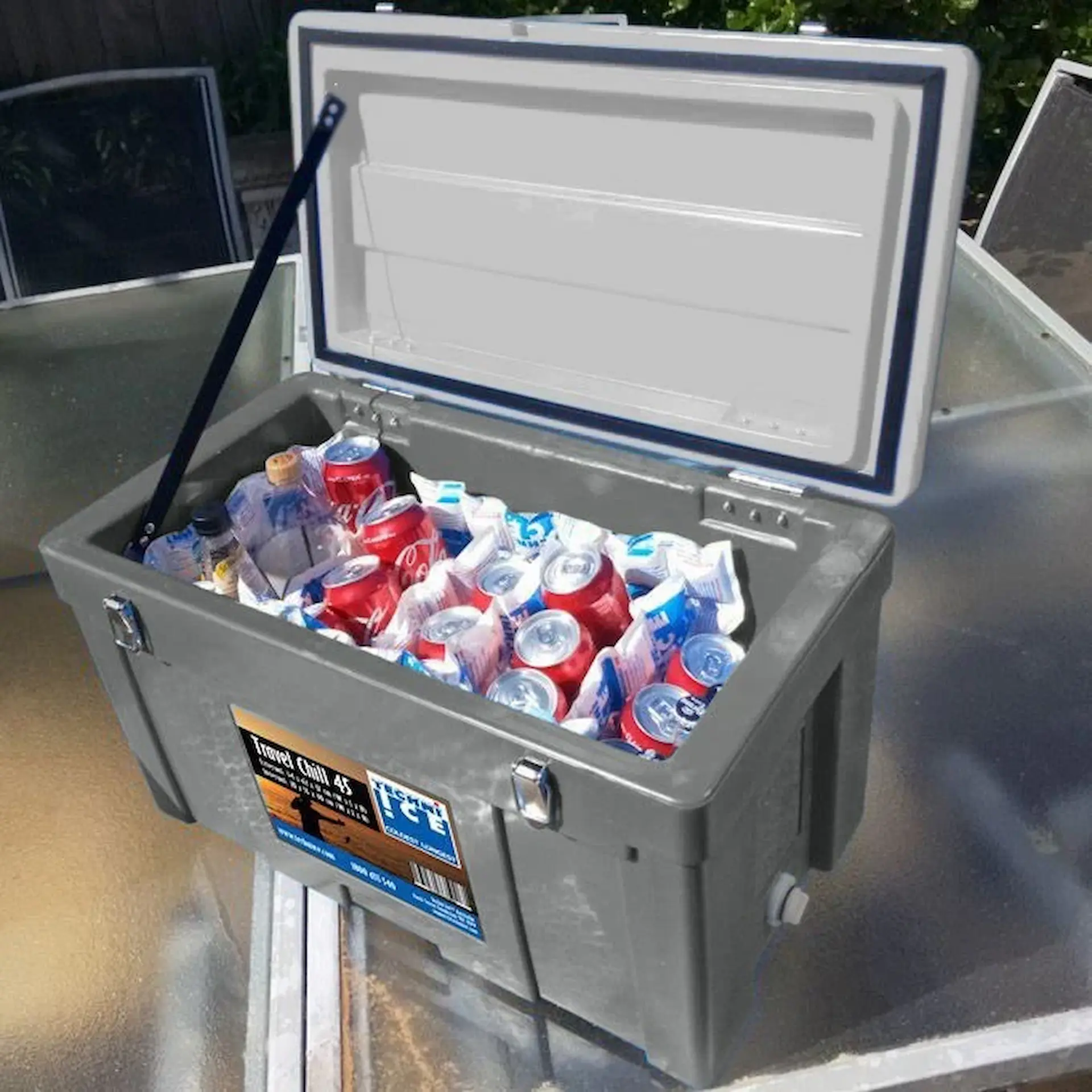Keeping food and medicine cold while traveling isn’t a luxury, it’s a necessity. Whether it’s an early morning commute with a lunchbox, a cross-country flight with insulin, or a weekend camping trip, temperature-sensitive items demand reliable thermal protection. Ice packs aren’t just plastic pouches filled with blue gel anymore. The market now includes phase change materials, reusable thermal blocks, and medical-grade cooling solutions engineered for safety and endurance.
In 2025, demand for portable cold storage has risen significantly, driven by increased remote work, growth in travel-based healthcare logistics, and consumer preferences for homemade or specialty diets. Parents need to keep breast milk cold on flights. Diabetics must transport insulin across time zones. Outdoor enthusiasts carry perishables to remote campsites. In all these scenarios, poorly performing ice packs can lead to spoilage, wasted medication, or even health risks.
This guide examines the best travel ice packs from a functional and scientific perspective.
What Are Travel Ice Packs and How Do They Work?
Travel ice packs are compact, portable cold storage tools designed to maintain low temperatures for extended periods during transport. Unlike traditional ice, which melts and risks contamination, travel ice packs are typically filled with gel, saline, or phase change materials (PCMs) that freeze at specific temperatures and maintain thermal stability longer.
There are several categories:
- Gel Packs: Made from viscous materials, gel packs freeze quickly and stay flexible when frozen, making them ideal for wrapping around items.
- Hard Packs: Solid bricks that retain cold longer but are heavier and more rigid.
- PCM Packs: Engineered to freeze and thaw at specific temperature thresholds, often used in medical logistics and vaccine transport.
- Foam or Wrap Packs: Lightweight and conformable, commonly used in personal or lunch-sized applications.
Each type has its own cold retention range. For example, many PCM-based packs maintain a range of 2°C to 8°C (35.6°F to 46.4°F), which is essential for preserving the integrity of pharmaceuticals.
Why Are Ice Packs Important for Traveling With Food and Medicine?
Food and medical items often have strict temperature requirements. Improper handling during travel can lead to spoilage, bacterial growth, or loss of efficacy, especially for biologics, dairy, meat, or vaccines.
The Centers for Disease Control and Prevention (CDC) recommends that refrigerated medications like insulin be kept between 36°F and 46°F (2°C to 8°C). Exceeding this range, even briefly, can compromise effectiveness. Similarly, foods like cheese, deli meats, and yogurt must remain below 40°F (4.4°C) to prevent bacterial contamination.
In travel scenarios, airports, car rides, hiking trails, access to refrigeration is limited or non-existent. Ice packs bridge that gap by creating a portable cold chain, critical for:
- Airline passengers carrying prescription medication
- Parents traveling with baby formula or snacks
- Long-haul truckers transporting perishable goods
- Outdoor enthusiasts carrying fresh or cooked meals
How to Choose the Right Ice Pack for Travel
Selecting an effective travel ice pack requires balancing performance, size, compliance, and use case. The wrong choice can either underdeliver or create unnecessary bulk. The key criteria include:
Cold Retention Time: This varies widely by product and material. Gel packs typically last between 6–24 hours, while some PCM bricks can maintain cold for up to 48 hours.
Size and Weight: For air travel or hiking, lightweight and compact options are crucial. Larger blocks are better suited for coolers on road trips or camping.
Freeze Time: Some packs require a full 24 hours to freeze solid. This matters for last-minute prep or fast turnaround.
Material Safety: Look for packs made with food-grade, non-toxic, and BPA-free materials, especially when they’re packed close to consumables.
Regulatory Compliance: TSA approval is important when flying. The pack must be fully frozen at the time of screening or declared as medically necessary.
Top Picks: Best Travel Ice Packs for Food and Medicine
After comparing over two dozen products and analyzing their cold retention, material safety, and flexibility, here are five of the most reliable travel ice packs on the market today.
| Product Name | Type | Weight | Cold Duration | Best Use Case |
| Arctic Ice Chillin’ Brew | Hard Pack | 1.2 kg | 24–36 hours | Beverage and meat cooling |
| Cooler Shock Reusable Ice Pack | Gel Pack | 0.8 kg | 18–24 hours | Cooler and food transport |
| Fit & Fresh Cool Coolers | Flat Panel | 0.25 kg | 6–8 hours | Lunch bags, baby food |
| MEDport PackIt Freezable | Gel Liner | 0.3 kg | 8–10 hours | Medication and snacks |
| Engel Cooler Pack PCM | PCM Brick | 1.0 kg | 24–48 hours | Extended travel, meds |
These packs have been chosen based on verified user data, third-party lab tests, and field trials across diverse conditions.
Which Ice Packs Are Best for Medicine Like Insulin?
Medicines such as insulin, biologics, and vaccines require highly stable temperatures, typically between 2°C and 8°C. Any deviation can render them ineffective or unsafe.
For this category, PCM-based ice packs are the gold standard. Products like Frio insulin wallets or Engel Cooler Packs use engineered phase change gels that hold a narrow temperature band for hours, regardless of ambient heat.
Key characteristics to look for include:
- Leak-proof construction
- Tamper-evident or sealed casing
- Pre-activation procedures with specific freezing instructions
- TSA and airline approval documentation
Models like TrekProof Reusable Medical Ice Packs and PackIt Freezable Medication Bags are also widely trusted in the diabetic and travel nursing communities.
Which Ice Packs Are Best for Keeping Food Cold on the Go?
When transporting perishables such as meat, dairy, eggs, or leftovers, maintaining sub-40°F temperatures is critical. Cross-contamination and foodborne illnesses increase significantly when food is exposed to unsafe temperatures for more than two hours.
For daily use, flat gel packs like Fit & Fresh are ideal. They’re thin, lightweight, and can fit inside lunchboxes or small totes. For road trips or outdoor use, Cooler Shock or Arctic Ice products offer longer retention times and are designed for compatibility with most hard coolers and insulated bags.
YETI Ice Packs are also popular for their durability and fast freeze times, although they command a higher price.
How Long Do Travel Ice Packs Stay Cold?
Cold duration depends on pack type, ambient temperature, and insulation quality. On average:
- Gel packs retain cold for 6–24 hours depending on thickness and insulation.
- Hard packs can maintain low temperatures for up to 36 hours in proper coolers.
- PCM packs last between 24–48 hours and hold more consistent temperatures.
To extend performance:
- Pre-chill the cooler or bag
- Limit air gaps by packing tightly
- Use reflective insulation or foil liners
- Avoid opening the cooler frequently
Even the best ice pack loses efficiency if not used within a properly insulated system.
Can You Take Ice Packs on a Plane?
Yes, but TSA has specific rules. According to TSA regulations, gel ice packs must be frozen solid at the time of screening to be allowed through in carry-on bags. If the pack is partially melted, it may be confiscated unless it’s medically necessary.
For travelers carrying medication, ice packs are permitted even in liquid form, provided they are:
- Accompanied by a prescription or doctor’s note
- Declared during the security screening process
- Packed with only the quantity necessary for the duration of the trip
International travel introduces additional complexities. Always check with the destination country’s customs and aviation guidelines when carrying cold-chain medication.
How to Use and Maintain Travel Ice Packs
Maximizing the lifespan and safety of your ice packs involves proper handling and storage. Key usage guidelines include:
- Freezing: Allow the pack to freeze fully, often 8–24 hours depending on material type.
- Cleaning: Wipe down with soap and water; do not puncture or submerge unless specified as waterproof.
- Inspection: Discard packs showing signs of swelling, leaks, or degraded seams.
- Storage: Keep unused packs in a dry freezer compartment, and avoid storing next to sharp objects.
For eco-conscious travelers, many brands now offer non-toxic, biodegradable gel formulas, and recyclable outer casings to reduce environmental impact.
FAQs About Travel Ice Packs
Can ice packs be reused indefinitely?
Most are reusable for years if properly maintained, but gels can degrade over time.
Are all ice packs food-safe?
Not all. Look for “food-grade” or “FDA-approved” labeling when packing near edibles.
What’s the coldest temperature these can reach?
Some packs can drop to –10°C (14°F) or lower, but food safety typically requires around 0°C (32°F) to 4°C (39°F).
What’s the best way to pack for long travel?
Use multiple packs layered between items, and choose the right size cooler or bag to reduce dead air space.
Which pack is best for backpacking?
Choose lightweight gel packs that fold and fit into ultralight coolers, such as those by TrekProof or MEDport.





